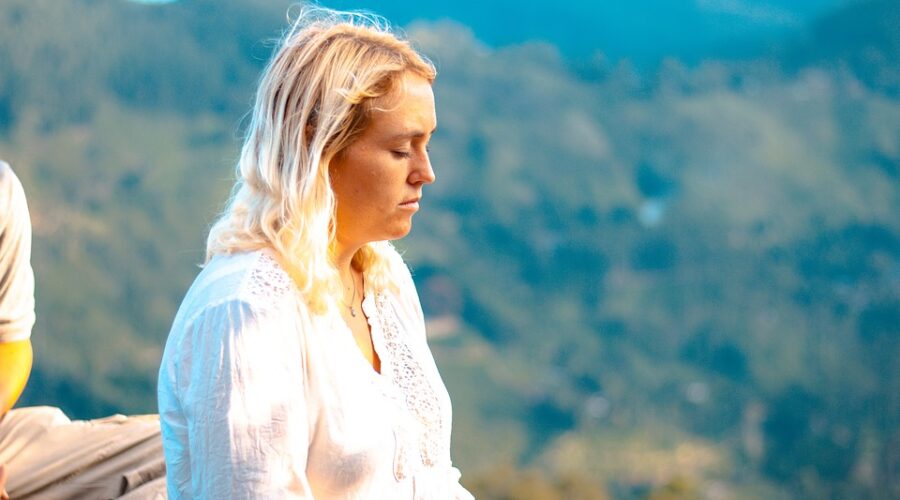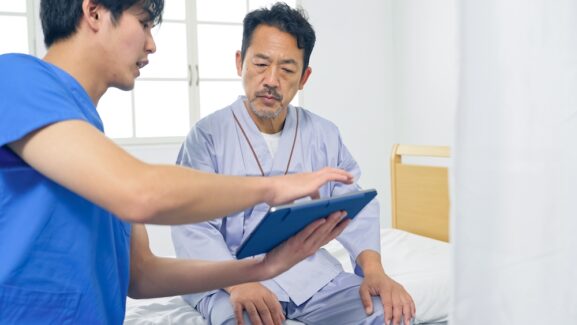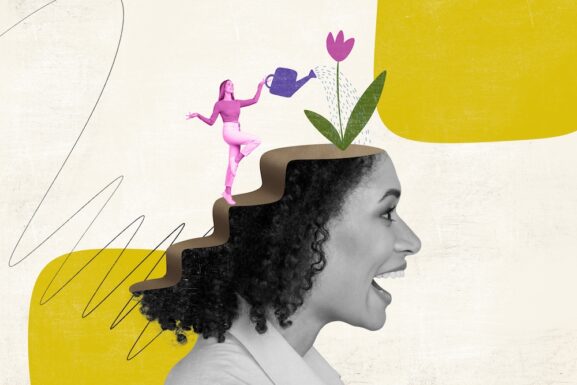Are All Ayahuasca Retreats The Same? You Might Be Surprised
Think all ayahuasca retreats are the same? If so, you’re mistaken. These retreats can differ in all sorts of ways. This is important, especially for those with an assumption of how they all are.
You might think that all ayahuasca retreats involve staying in a hut in a jungle, which may be the last environment you want to take a psychedelic in. Fortunately, there are retreats that can cater to varied interests, preferences, and comfort levels.
This post will focus on all the ways that ayahuasca retreats can differ, which will help you both to see how the ayahuasca tourism industry has developed and what kind of retreat setting is most likely to appeal to you.
RELATED: How To Engage In Ethical Ayahuasca Tourism
The Cost Of Ayahuasca Retreats
To begin with, it’s worth noting that ayahuasca retreats can differ significantly in how much they cost. They can range from $50 for one ayahuasca ceremony to $3,000 or more for a multi-day retreat.
You might think that all ayahuasca retreats are expensive, but they don’t have to be. If you’re already in South America (where you can often find the most affordable ceremonies) and you only want to join one ceremony, then you don’t necessarily have to spend a lot.
However, you get what you pay for. If you choose an ayahuasca retreat solely based on how cheap it is, it may not work in your favor. Unfortunately, many pseudo-shamans and abusive shamans exist.
If in South America and you are tempted to join a random ayahuasca ceremony because of the low price on offer, you should consider whether or not the “shaman” involved is actually trustworthy.
As we will see, the other factors that distinguish one ayahuasca retreat from another often relate to pricing.
RELATED: What Should You Wear to a Psychedelic Experience? How Clothes and Shoes Impact Your Trip
Ayahuasca Retreats Have Different Levels Of Comfort
It is true that some ayahuasca retreats involve sleeping in a hut, with a basic bed and mosquito net, plain and uninspiring food, basic toilet and shower facilities, and limited amenities.
For some people, this is exactly the kind of experience they want. Others, meanwhile, might be comfortable with this kind of setting on a short-term basis or they’re looking for the most affordable option available.
Other people, however, would rather be more comfortable during their ayahuasca retreat. The ayahuasca tourism industry is so developed nowadays that ayahuasca retreats can cater to people who want a maximum level of comfort, like that offered by resorts and hotels. You can now find luxury ayahuasca retreats, which may feature the following.
- Large, modern, well-furnished rooms with air conditioning
- Delicious and varied meals
- A swimming pool
- Many staff members at hand
- The kind of activities and treatments you might find at wellness retreats (e.g. yoga sessions and massage)
Some of these luxury ayahuasca retreat centers are in the jungle but others aren’t. For those looking to avoid Amazonian wildlife noise, there are options to take ayahuasca in a quiet, natural, non-jungle setting. One example would be up in the mountains.
RELATED: Modernized vs. Traditional Ayahuasca Ceremonies: Which is Right For You?
Not All Retreats Ask You To Commit To The Dieta
The dieta refers to the particular diet that ayahuasca-using cultures believe you should follow if you want to consume the hallucinogenic brew. The idea of the ayahuasca diet is to stick to clean, nutrient-dense, and unprocessed foods. It involves avoiding red meat, pork, spicy foods, alcohol, caffeine, dairy, and excess salt and sugar for at least three days. Ideally, however, this occurs up to two weeks before the ceremony.
There are ayahuasca dangers to be aware of. One specific one is avoiding foods or drinks containing tyramine, an amino acid found in aged cheeses, yeast, and fermented foods. This is because the monoamine oxidase inhibitor (MAOI) present in the ayahuasca vine (Banisteriopsis caapi) prevents the breakdown of tyramine, which can increase the chances of a nasty headache, increased blood pressure, and nausea.
In addition, the dieta can include recommendations to avoid strong flavors like garlic, onion, and excessive oil, and abstain from sexual activity, including masturbation, before the ceremony.
Not all ayahuasca retreats, however, ask that you follow the dieta, despite this being an aspect of traditional ayahuasca ceremonies. Even if they recommend a pre-set diet before and during the ayahuasca retreat, the diet may be more flexible.
For instance, an ayahuasca retreat center may just ask you to avoid tyramine-rich foods to avoid complications. There may also be no recommendations to abstain from sex.
Retreats Are Available Outside Of Only The Amazon And South America
Contrary to popular belief, not all ayahuasca retreats are only in the Amazon or Peru. You can join ayahuasca ceremonies in other South American countries like Brazil, Ecuador, Bolivia, Colombia, Chile, and Argentina.
Ayahuasca retreat centers also exist all over the world. Many of them are in Central America as well, with Costa Rica being a particularly popular spot for them (since the brew is legal there). Other countries that people commonly travel to for ayahuasca ceremonies include Portugal, Spain, and the Netherlands.
It is possible to find ayahuasca ceremonies taking place in a range of locations throughout North America and Europe.
RELATED: Why Aaron Rodgers’ Ayahuasca Admission Is Significant, And What We Can Learn From It
Where Is Ayahuasca Legal?
So, where is ayahuasca legal? The most popular ayahuasca retreats happen in countries like Peru, Brazil, Ecuador, Brazil, and Costa Rica. Each of these destinations allow the practice.
In other countries, such as Portugal and Spain, ayahuasca — and drugs in general — are decriminalized. This means you there is no prosecution for personally possessing or using ayahuasca. However, the sale, transportation, and cultivation of ayahuasca may be illegal, as it is in Portugal.
In many countries where ayahuasca retreats take place, ayahuasca is illegal. This is because the psychedelic compound in ayahuasca, DMT, is a controlled substance throughout the world. For instance, DMT is a Schedule I drug in the United States. This category also includes drugs such as heroin and methamphetamine.
Using ayahuasca in North America, Asia, Oceania, and much of Europe can technically incur the highest legal penalties. However, individuals joining retreats in such countries will rarely find themselves in any legal trouble as a result.
In countries where ayahuasca is illegal, retreats will happen underground, with awareness about them typically spreading by word of mouth. Those organizing retreats in these countries will, no doubt, want to keep their activities hidden from the authorities as much as possible.
The Context Surrounding Retreats Can Differ
Many people might think that if you join an ayahuasca retreat, it will happen in the context of Amazonian shamanism — which involves belief systems that many Westerners won’t hold or agree with. Indeed, not everyone is open to the idea of “spirits” or the “spirit world”. There are also ayahuasca retreats that place the ayahuasca experience within the context of other belief systems, such as Hinduism, chakras, or certain New Age ideas.
If you want to join an ayahuasca retreat that focuses just on the experience and healing process, without any conceptual or religious frameworks attached to the ceremony, you should know that these do exist. There are retreats that can appeal to people who hold a variety of beliefs.
The Group Size Can Vary
When you join an ayahuasca retreat, you will typically join a group of people. You will all have your experience together in the same ceremony room. But the number of people joining a particular retreat can vary significantly. There may be a handful of other people in the group or a large number.
It is possible to find ayahuasca retreats where up to 30 people drink the brew together in a small room. There are other ayahuasca retreats where 50 or more people are in the group but in a large room.
Of course, individuals will have their own comfort levels when it comes to how many people they want in their group. You should take this into account when looking for an ayahuasca retreat. Pay attention to the group size limit and think about whether you would enjoy having a psychedelic experience around that many strangers.
RELATED: Mike Wilson: Gaming’s Medicinal Madman
You Can Find Private Ayahuasca Retreats
Despite what many believe, not all ayahuasca ceremonies take place in a group setting. Looking for a more personal experience? It is possible to find private ayahuasca retreats.
You should expect these ayahuasca retreats to be more expensive. But for many people, it’s worth it. As much as someone might have interest in trying ayahuasca, it may feel weird doing so with strangers. Many find the group setting more conducive to a positive experience, allowing deep bonds to form. However, others may find the presence of others distracting and disruptive.
It is common for people to vomit, cry, talk, and make other noises during an ayahuasca experience. So if you prefer having as few interruptions as possible, you might want to consider a private retreat.
Not all ayahuasca retreats are the same — and this is a good thing. It means that there are options out there that will appeal to people with a wide range of preferences.
In order to figure out what kind of ayahuasca retreat will suit you best, take the time to compare and contrast different reputable retreat centers, paying attention to exactly what they offer — and what they don’t.




Gazelle Richardson
June 27, 2022 at 6:46 amA fair amount of valuable information. Thank You!
Do people ever have what was called “a bad trip”, back in the day were many were experimenting with LSD? Is it recommended for people who are having Depression and Anxiety, or have seizures, or low blood sugar issues?
Sam Woolfe
August 12, 2022 at 3:46 pmHi Gazelle, many people who drink ayahuasca report having challenging experiences with dark moments, but these can turn out to be ultimately meaningful and beneficial. But certainly, as with any psychedelic, it is possible to have more distressing experiences. With the right kind of preparation and support during and after distressing experiences, it is possible to redirect the experience and one’s interpretation of it when it’s over.
Set and setting apply to ayahuasca as with any other psychedelic. If you feel mentally and physically ready for the experience, and are taking it in a safe and supportive setting, then you’ll give yourself the best chance of having a positive experience.
Many people find that using ayahuasca is helpful for their depression and anxiety, and research indicates the same:
https://www.psypost.org/2021/06/ayahuasca-use-associated-with-greatly-improved-anxiety-and-depression-symptoms-in-large-international-study-61315
It is not recommended to take ayahuasca if you have seizures. An ayahuasca ceremony may be difficult if you have low blood sugar issues since you are advised to fast several hours before consuming the brew.